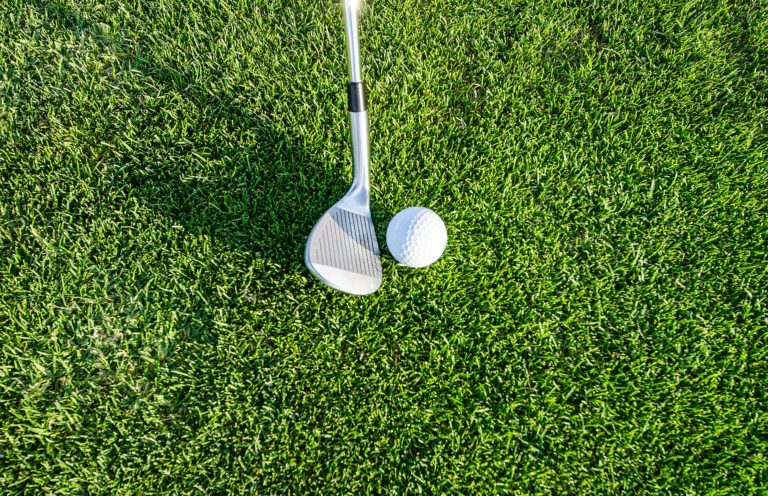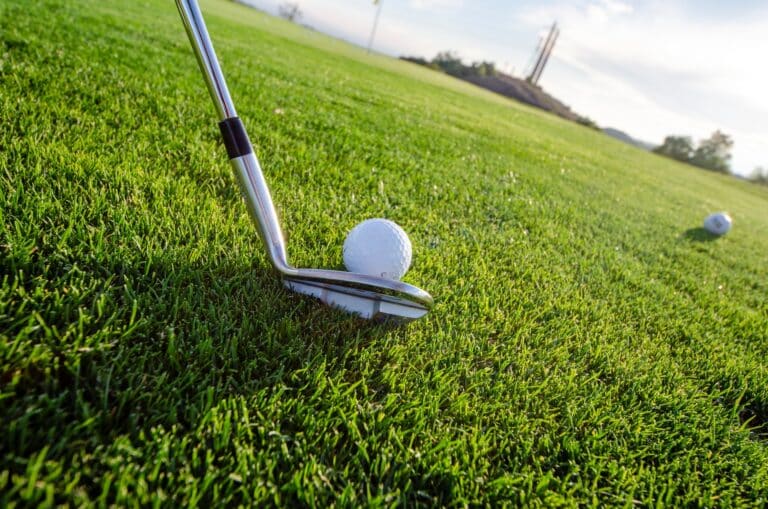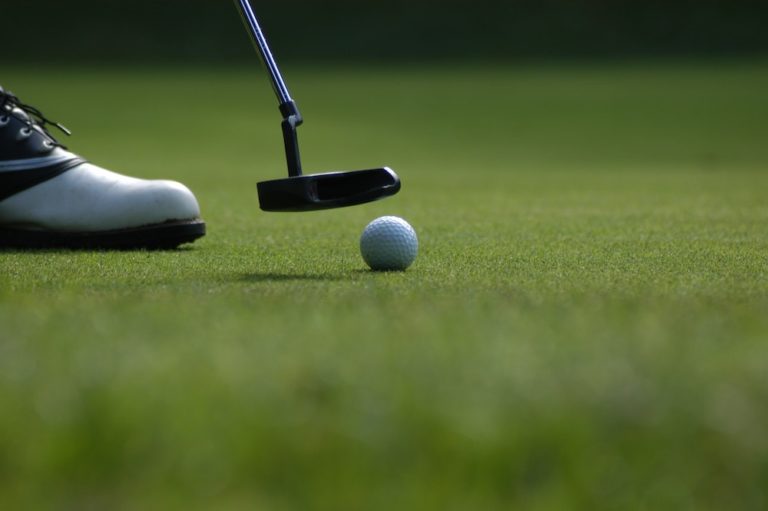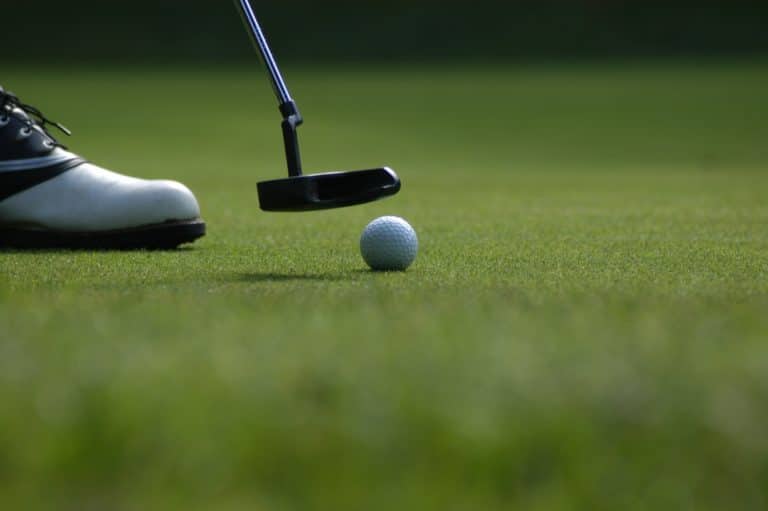From tight lies to challenging shots near the bunker, a well-executed flop shot can be the difference between an average round of golf and a great one.
But when it comes to learning how to hit a flop shot, many golfers find themselves at a loss. Don’t worry – we’ve got you covered! In this article, we’ll walk you through how to hit a flop shot in golf.
What is a Flop Shot?
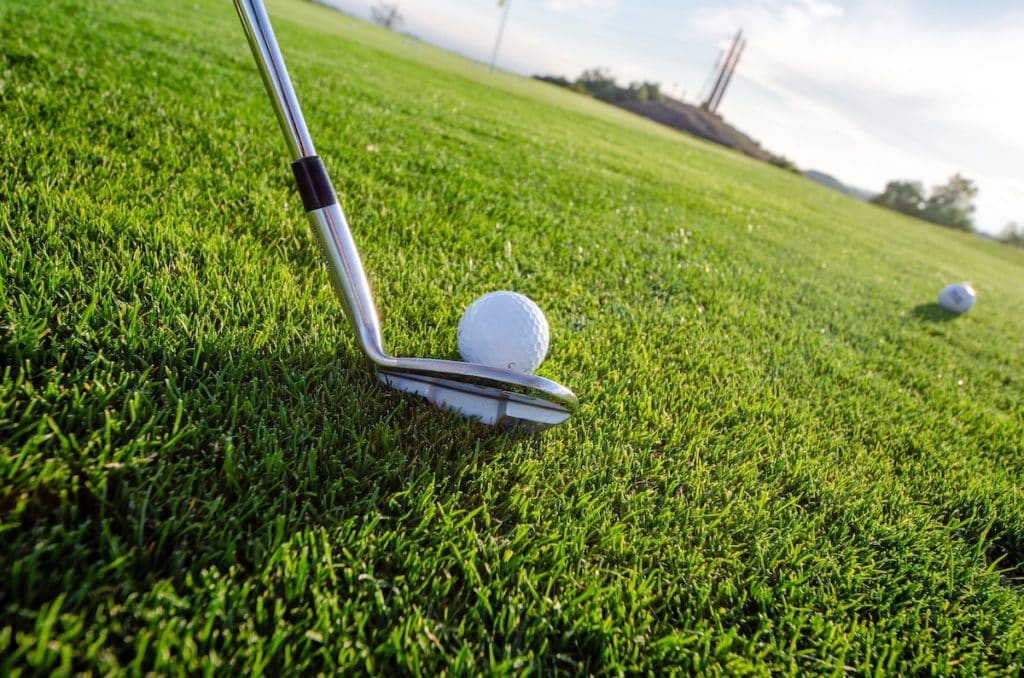
A flop shot in golf is a high-trajectory golf shot that lands softly on the green. It’s typically utilized when a golfer needs to get the ball up quickly and have it stop with little to no roll. Usually, these shots are made with either a sand wedge or a lob wedge.
Flop shops are typically used when there are obstacles, such as a bunker, or when the pin is situated close to the edge of the green.
Golf flop shots require a lot of skill and practice, as they involve a unique swing technique.
Why You Should Know How to Hit a Flop Shot
Knowing how to hit a flop shot can significantly improve your golf game. It can rescue you from tricky situations, providing an added layer of strategy to your golf game around the greens.
Mastering the flop shot can make you a more versatile player, capable of handling a variety of course conditions and challenges. It’s an essential tool for any golfer aspiring to lower their handicap.
6 Tips for How to Hit a Golf Flop Shot
Are you ready to improve your golf flop shot? Here are six tips to follow.
Use a Club With a lot of Bounce
Using your most lofted club with a lot of bounce can greatly assist in executing a successful flop shot.
The term “bounce” refers to the angle between the leading edge of the club and the ground. High-bounce clubs have a wider angle, which means the leading edge sits higher when the club is grounded.
High bounce clubs are less likely to dig into the turf upon impact, reducing the risk of hitting the shot fat. Instead, the clubhead tends to glide or “bounce” through the grass, making clean contact with the ball and launching it high into the air.
Open The Clubface
Opening the clubface is a crucial technique when trying to hit a flop shot. To do this, you will twist the club in your hands so the club face points toward the sky. This is going to increase the loft of the club, which in turn, generates a steeper launch angle for the ball.
A steeper launch angle is going to help the ball to rise quickly, clearing any obstacles, and descend sharply, minimizing the roll once it lands on the green. This is also going to help put backspin on the ball.
It’s important to note that hitting shots with an open club face requires practice. It alters the alignment of the shot, which can easily lead to skewed shots.
But with regular practice, you can perfect the technique, giving yourself a new shot in your toolbox, which can help you get out of some tricky situations on the golf course.
Position the Golf Ball Forward in Your Stance
One crucial aspect of hitting a successful flop shot is the positioning of the golf ball in your stance. Ideally, the ball should be positioned forward, closer to the inside of your lead foot.
This ball position allows you to strike the ball on the upswing. This promotes a high, soft-landing trajectory.
Plus, by placing the ball forward, you can also maximize the effectiveness of the open clubface. With the ball positioned closer to your leading foot, you can leverage the full loft of the clubface, ensuring a steep launch angle and a high ball flight.
However, it’s important to maintain balance and stability when positioning the ball in your stance. It can initially feel unnatural and may cause a tendency to lean back during the swing, which could result in poor contact and mishits. You’ll want to ensure you’re keeping your weight forward, and you’ll find yourself hitting a great shot.
Utilize a Longer Swing
When executing a flop shot, you’ll find that you need to have a longer swing than you typically would for a pitch shot.
The longer swing will help you produce a higher launch trajectory and a soft landing.
The longer swing will also help create backspin, which reduces the ball’s roll once it lands on the green.
However, it’s crucial to remember that a longer swing doesn’t mean a harder swing. The emphasis should be on maintaining control and balance throughout the swing rather than generating raw power.
The aim is to strike the ball cleanly and use the club’s loft and the swing’s length to achieve the desired trajectory and landing.
Achieve Immediate Stop on The Green with Speed Through Impact
A well-executed flop shot will stop almost immediately after landing on the green. Such precision is achieved primarily through maintaining speed through impact.
Maintaining a constant swing speed through impact with the ball is going to help the spin rate of the ball. A faster clubhead speed at impact imparts greater spin on the ball, enhancing its ability to stop rapidly.
It’s important to remember that maintaining speed doesn’t necessarily mean hitting the ball hard. The goal should be to keep the club moving swiftly through impact rather than focusing on a forceful hit. This approach ensures that the ball is struck cleanly, creating the high trajectory and soft landing that define a perfect flop shot.
Practice Your Flop Shot at the Driving Range
Before utilizing the flop shot on the golf course, do a little practice at the driving range. This will allow you to experiment and adjust your technique without the pressure of ruining your score.
You’ll be able to focus on the individual components of the flop shot. Things such as your stance, being able to swing through the ball with the club face open at impact, as well as maintaining your speed control. Each of these will help you achieve a high trajectory and soft landing on your shot.
The Bottom Line
Hitting a flop shot in golf is something that requires practice and patience. But when you get the hang of it, this shot can significantly improve your game. You’ll be able to navigate complex green-side scenarios and hopefully shoot better scores because of it.
Sean’s parents first put a golf club in his hands at the age of 8. He immediately fell in love with the game of golf. Today he’s passing on that love to his own kids.

